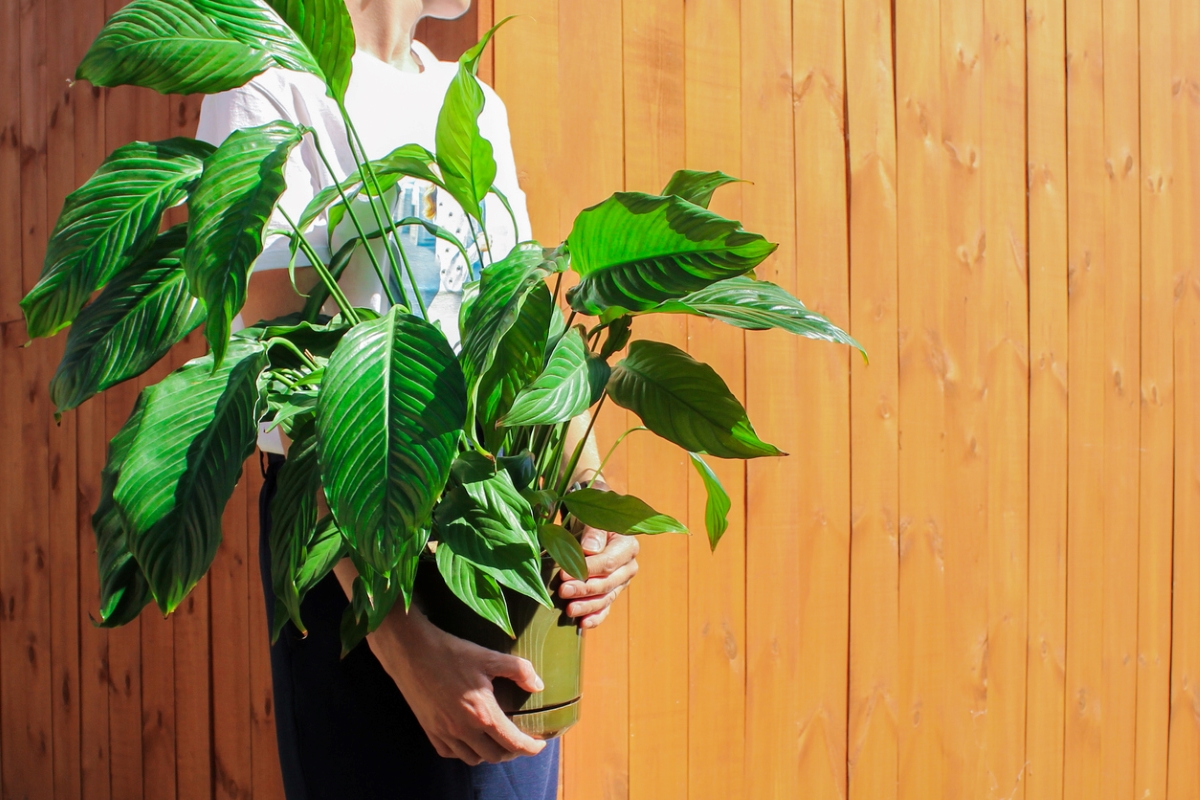We may earn revenue from the products available on this page and participate in affiliate programs. Learn More ›
Large indoor plants make for stunning focal points, boosting your interior aesthetic with lots of visual appeal. They’re also a great way to bring literal and figurative life to an empty corner or awkward space. Plus, if you need a little more privacy, you can put them in front of the windows in lieu of curtains.
One of these large houseplants, each with different appearances and care needs, might make a perfect addition to your home, whether you’re an experienced grower or brand new to plant care.
1. Monstera (Monstera deliciosa)
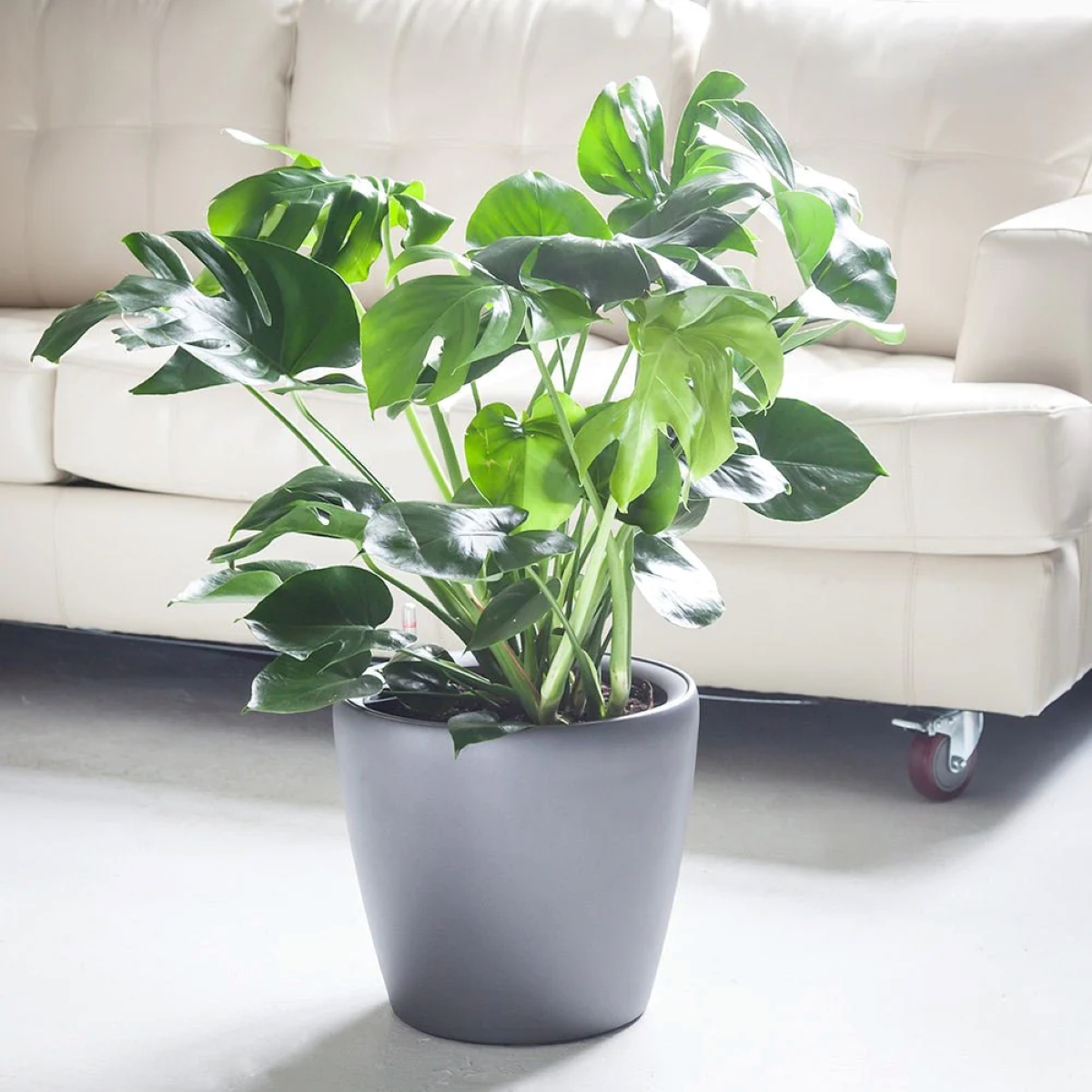
Monsteras are hugely popular for their massive size and big luscious leaves that feature attractive splits. This plant can grow up to 15 feet tall, but you can keep it at lower heights to accommodate your home’s size. Monstera prefers partial sun and well-draining soil—when it’s happy, it will treat you to leaves that are as wide as 18 inches.
RELATED: The 18 Best Plants for Your Bedroom
2. Rubber Tree (Ficus elastica)
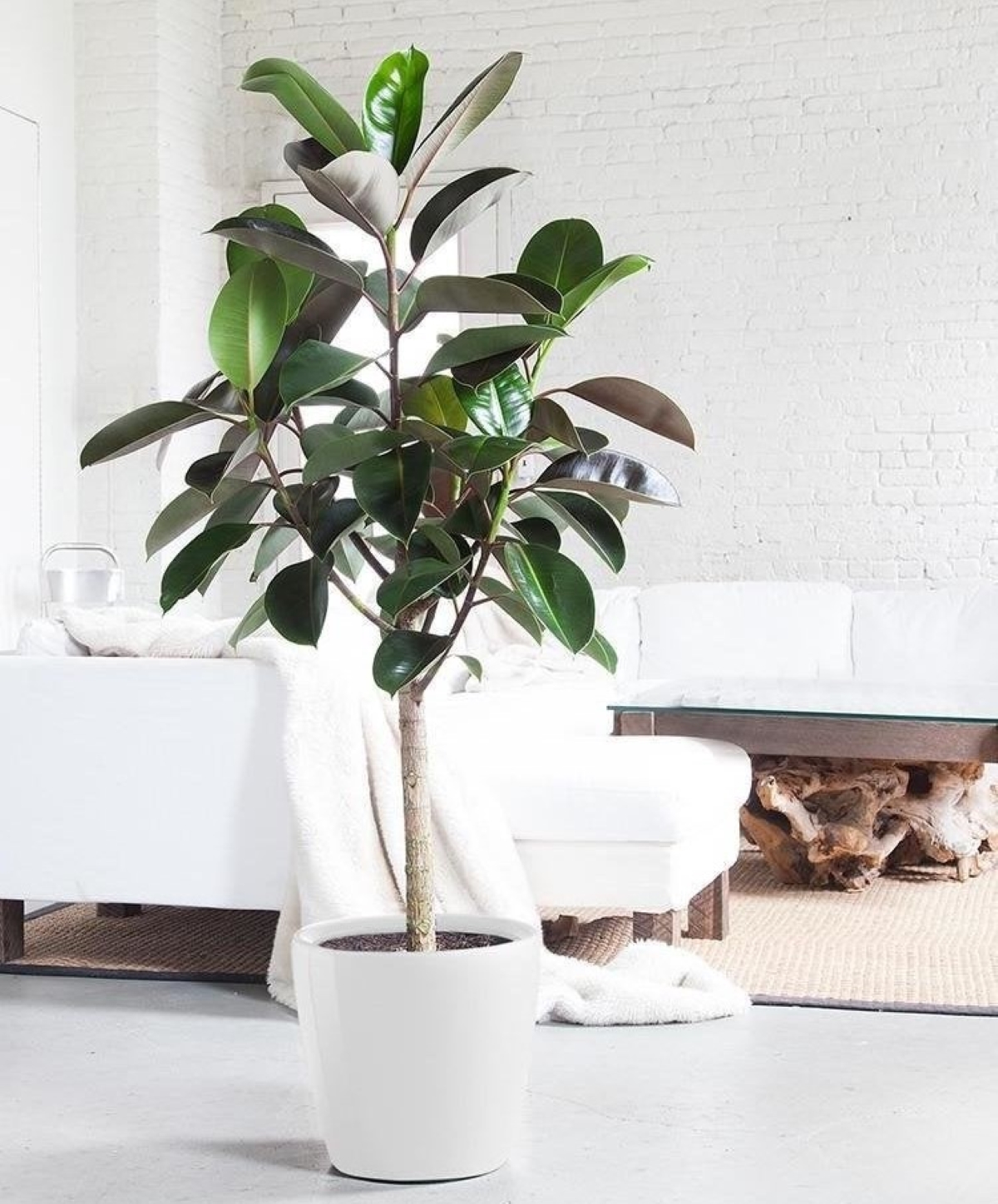
Rubber trees are great for novice gardeners who want large statement plants that won’t break the bank. While plant stores might charge a lot for mature rubber trees, you can grow your own from an expensive 4-inch pot in almost no time—a short rubber tree can grow by as much as 2 feet in a single growing season. It prefers medium to bright light and water every 1 to 2 weeks. Allow the soil to dry between waterings.
3. Fiddle Leaf Fig (Ficus lyrata)
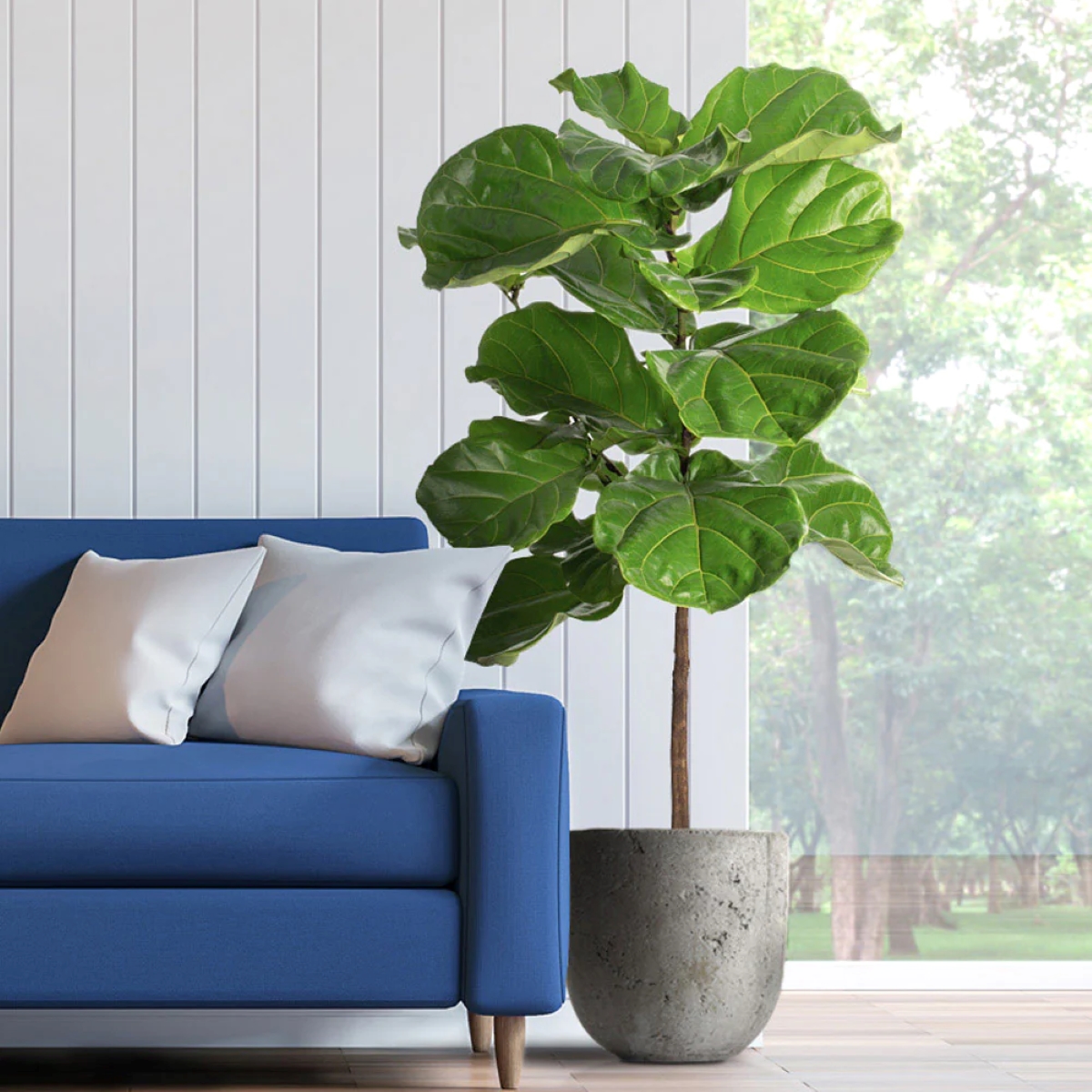
The original darling of plant bloggers, the fiddle leaf fig remains a stunning option for home gardeners who want a large houseplant that makes a big statement. Place your fiddle leaf fig in a bright window and turn it every once in a while so the tree grows straight instead of leaning toward the light. Once you find the ideal spot for your tree, don’t move it—fiddle leaf figs don’t respond well to frequent moves. Ensure it has well-draining soil, and water it whenever the top 2 inches of soil is dry.
RELATED: 14 Symptoms of an Unhappy Houseplant (and How You Can Treat Them)
4. Croton (Codiaeum variegatum)
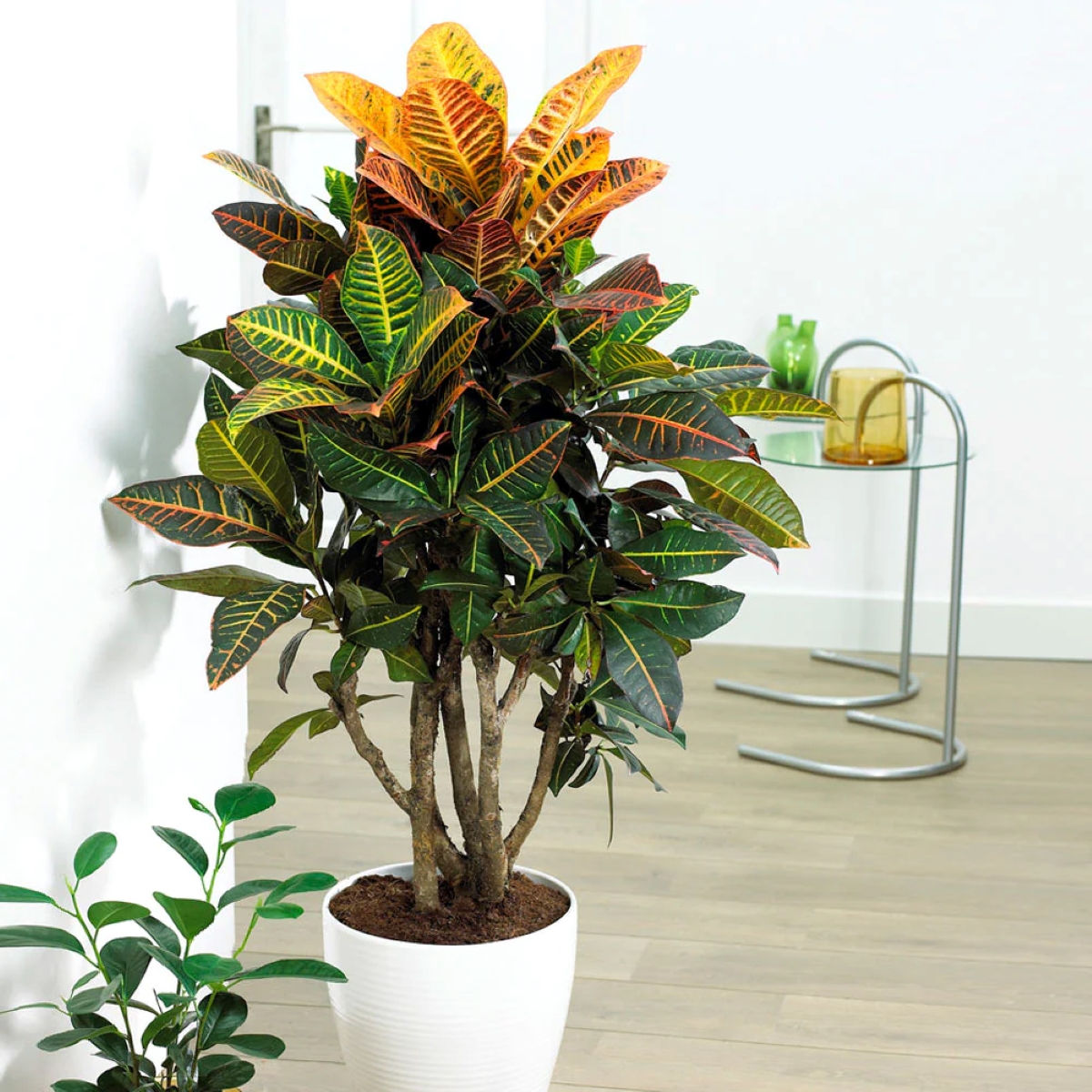
Colorful crotons can reach heights of 8 feet but will usually grow to about half that size if they’re cultivated indoors. Vibrant color and dramatic veining indicate the plant is receiving the bright indirect light it needs, while muted colors signal the light is too low. Burned leaves are a sign that the light it’s getting is too direct.
5. Bird of Paradise (Strelitzia reginae)
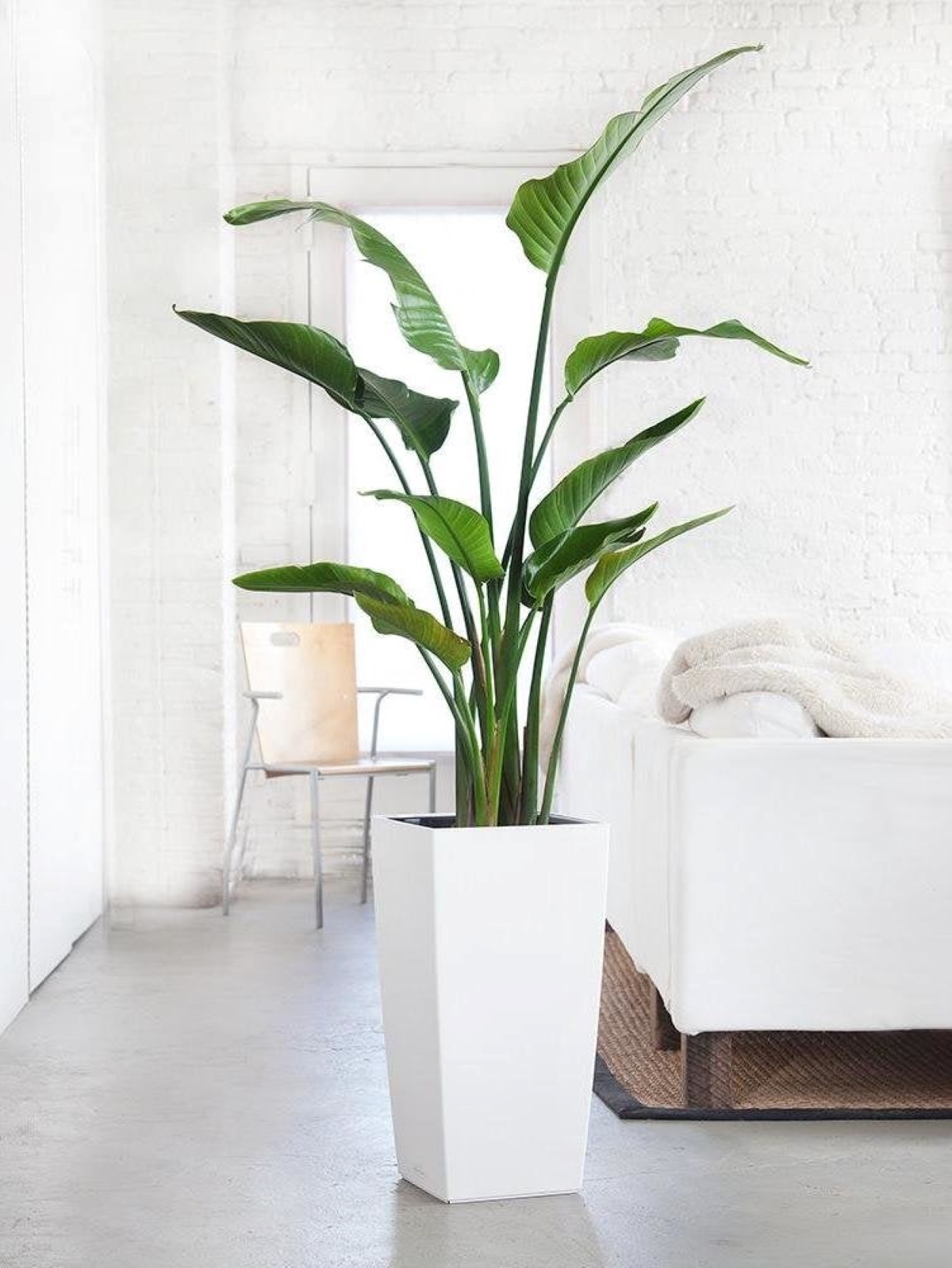
If you can help Birds of Paradise grow tall, it will reward you with striking blooms. The plant can grow up to 7 feet high and does best when planted in a tight pot. Place it in a bright window and water it every 1 to 2 weeks.
6. Olive Tree (Olea europaea)
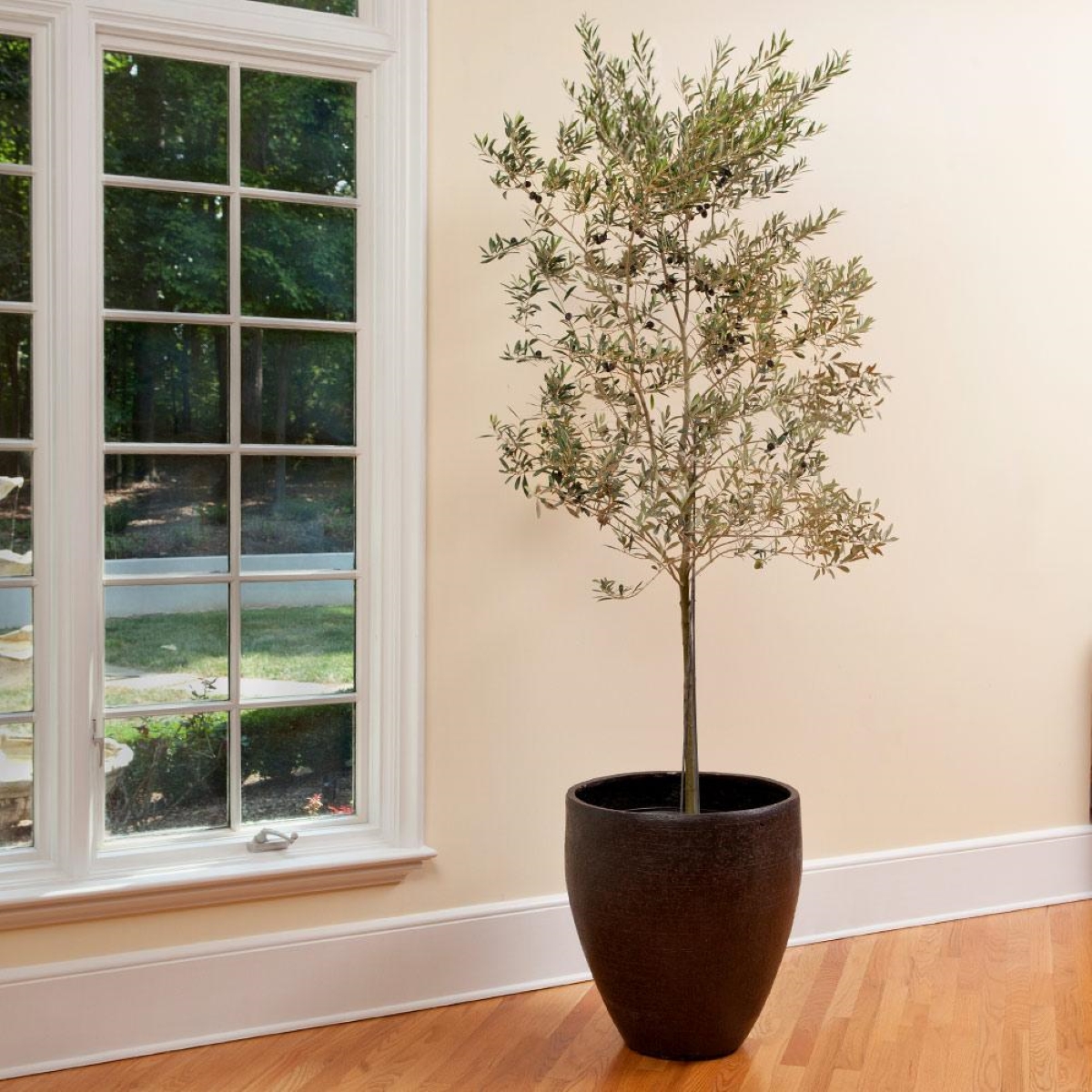
Cultivated by Mediterranean farmers for thousands of years, the olive tree remains an important crop to this day. Thanks to the cultivation of dwarf varieties, even indoor gardeners can enjoy raising this attractive plant. The dwarf olive tree grows to about 6 feet high and will produce fruit even before it reaches its full stature. Keep the soil moist and put it in a south-facing window with bright light to watch it thrive.
RELATED: Indoor Olive Tree Care: Meet the Houseplant That Loves a Good South-Facing Window
7. Dragon Tree (Dracaena marginata)
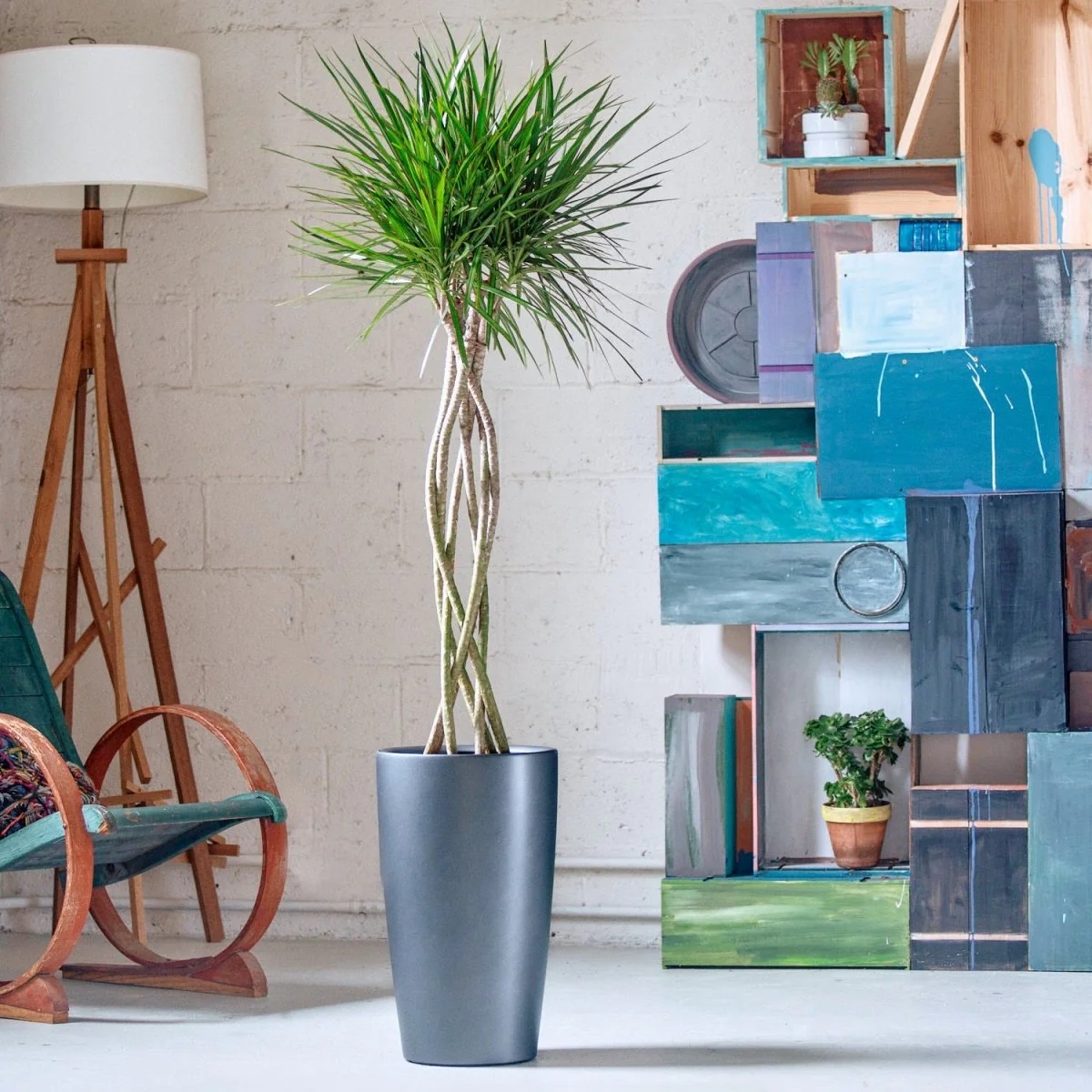
Dragon trees come in many forms, each with its own silhouette and stature, but Dracaena marginata is one of the most popular varieties for those seeking a dramatic indoor garden. Growing up to 8 feet tall, with a spray of spiky leaves and a willowy trunk, this large houseplant prefers bright light and soil that dries completely between waterings.
8. Corn Plant (Dracaena fragrans)
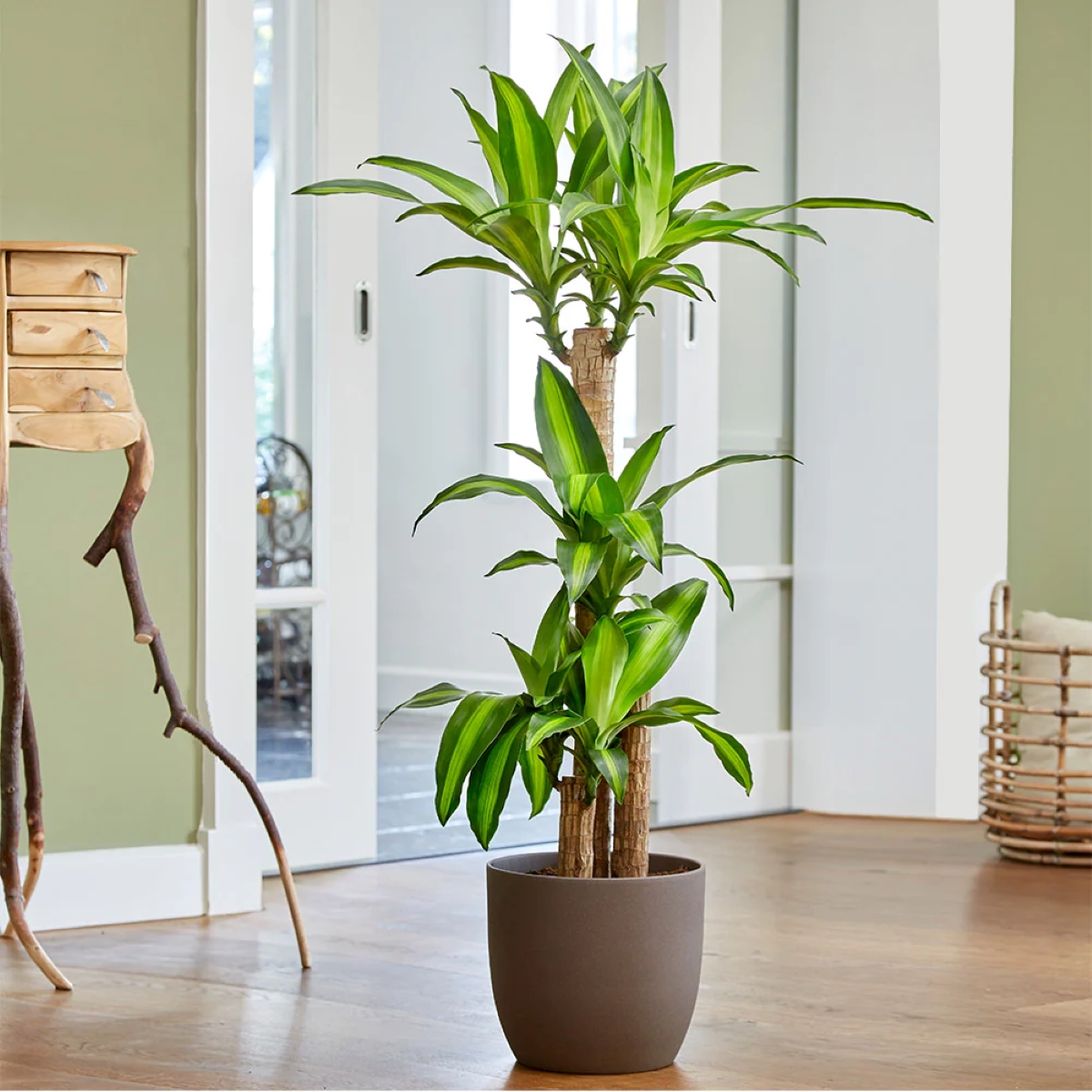
Corn plants are some of the easiest houseplants to grow—and they do grow, to heights of 12 feet or more. If you want to keep your corn plant on the shorter side, cut the top of the stems as soon as they reach your preferred height. Put it in front of a bright window with indirect sunlight and allow it to dry between waterings to keep it happy.
RELATED: 8 Exotic Houseplants You’ve Never Heard Of
9. Yucca Plant (Yucca elephantipes)
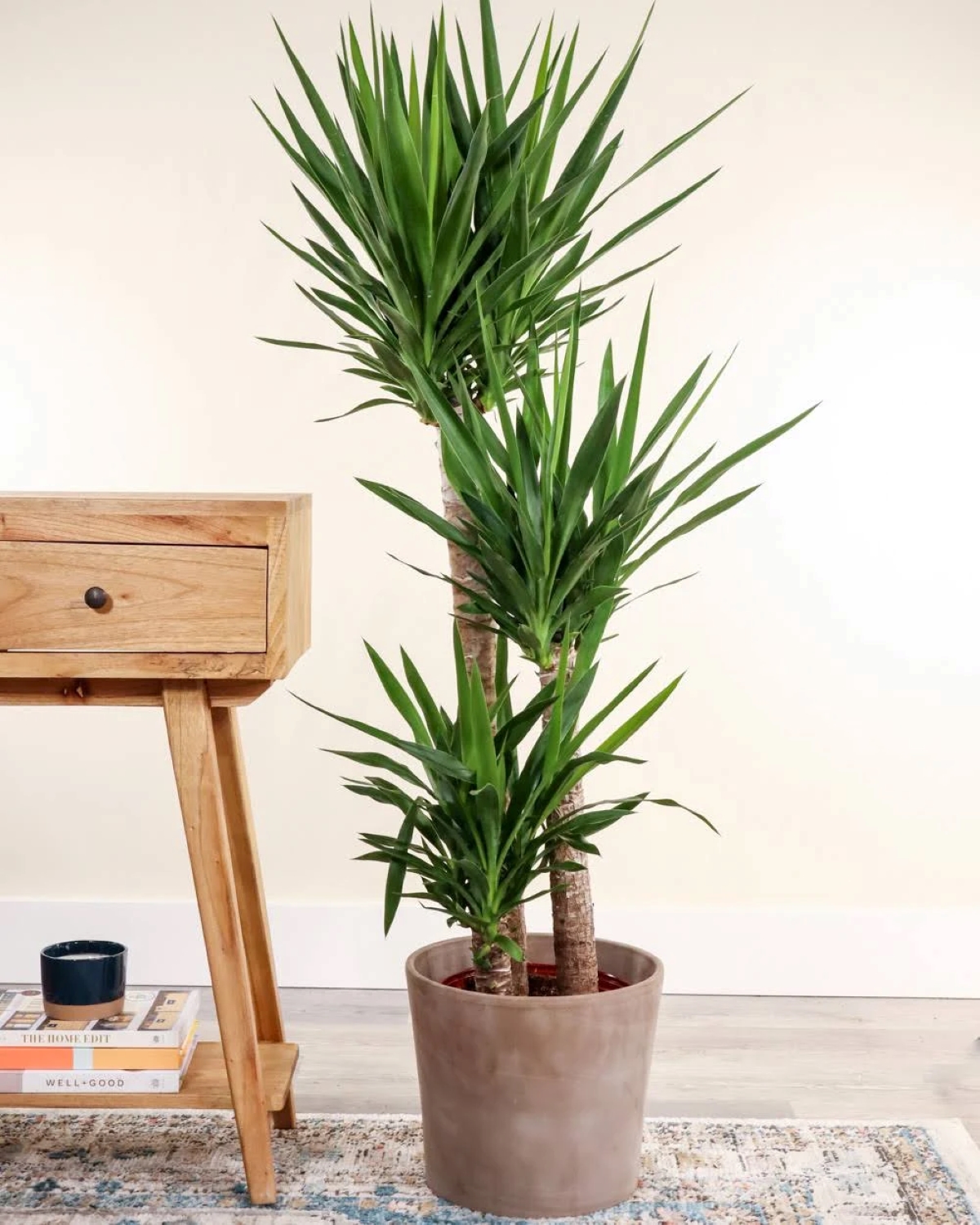
Yucca plants come in several varieties, some reaching up to 30 feet tall when grown outdoors. The species that is probably most suited to be grown as a houseplant is Y. elephantipes, because it’s one of the few species with spineless foliage, and can thrive in indoor growing conditions. Most yuccas do best when exposed to indirect light and well-draining soil. Take care not to overwater drought-tolerant yucca plants, and they will reward you with a gorgeous living accent piece.
10. Lemon Tree (Citrus × meyeri)
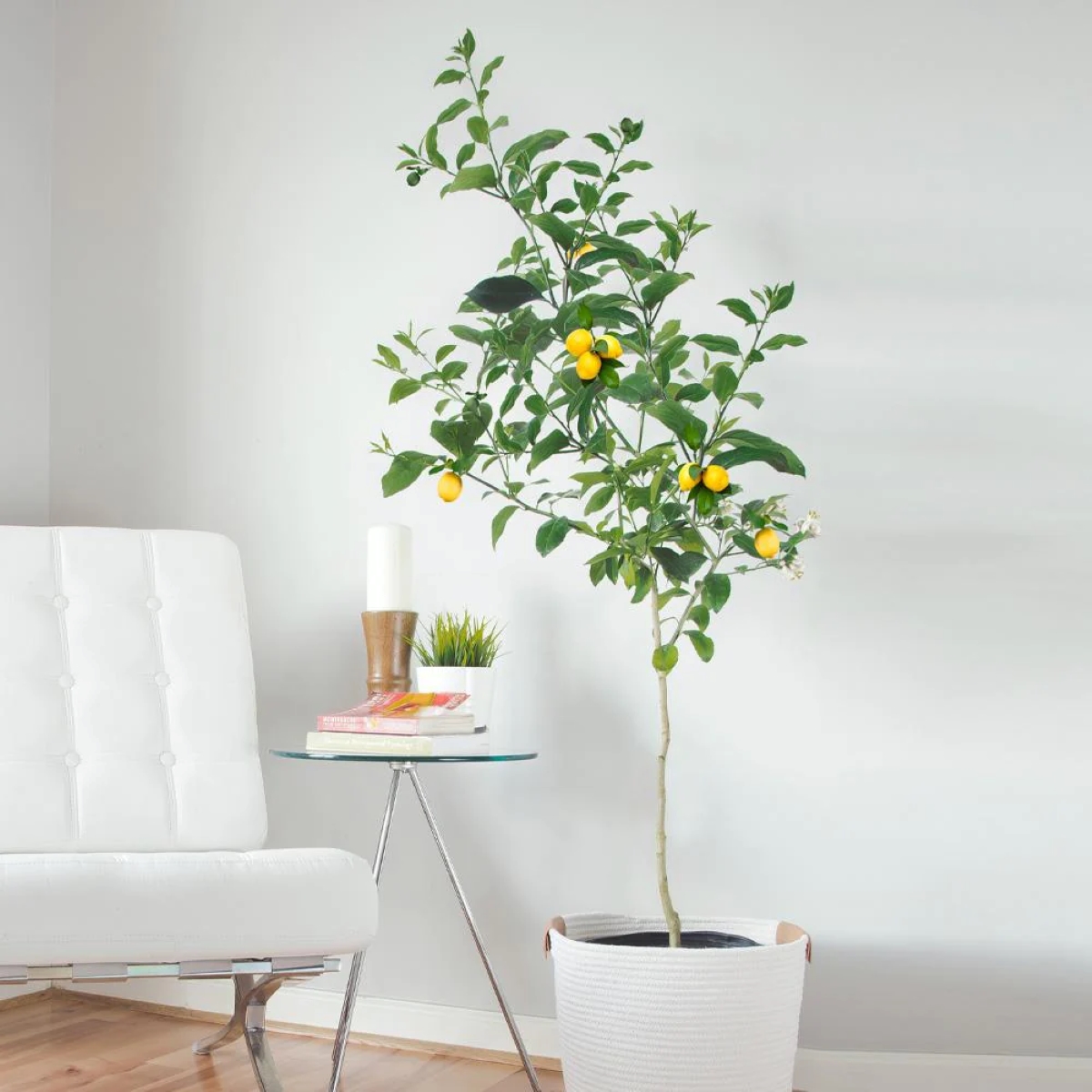
You can enjoy fresh citrus at home, even if you don’t live in a warm climate, by growing a lemon tree indoors. The dwarf variety of Meyer lemon grows to 3 or 4 feet tall—small enough to keep your living room from becoming an orchard, yet big enough to make a statement and supplement your pantry. Put it in a bright south-facing window and keep the soil moist.
RELATED: How to Grow Lemon Trees Indoors
11. Peace Lily (Spathiphyllum wallisii)
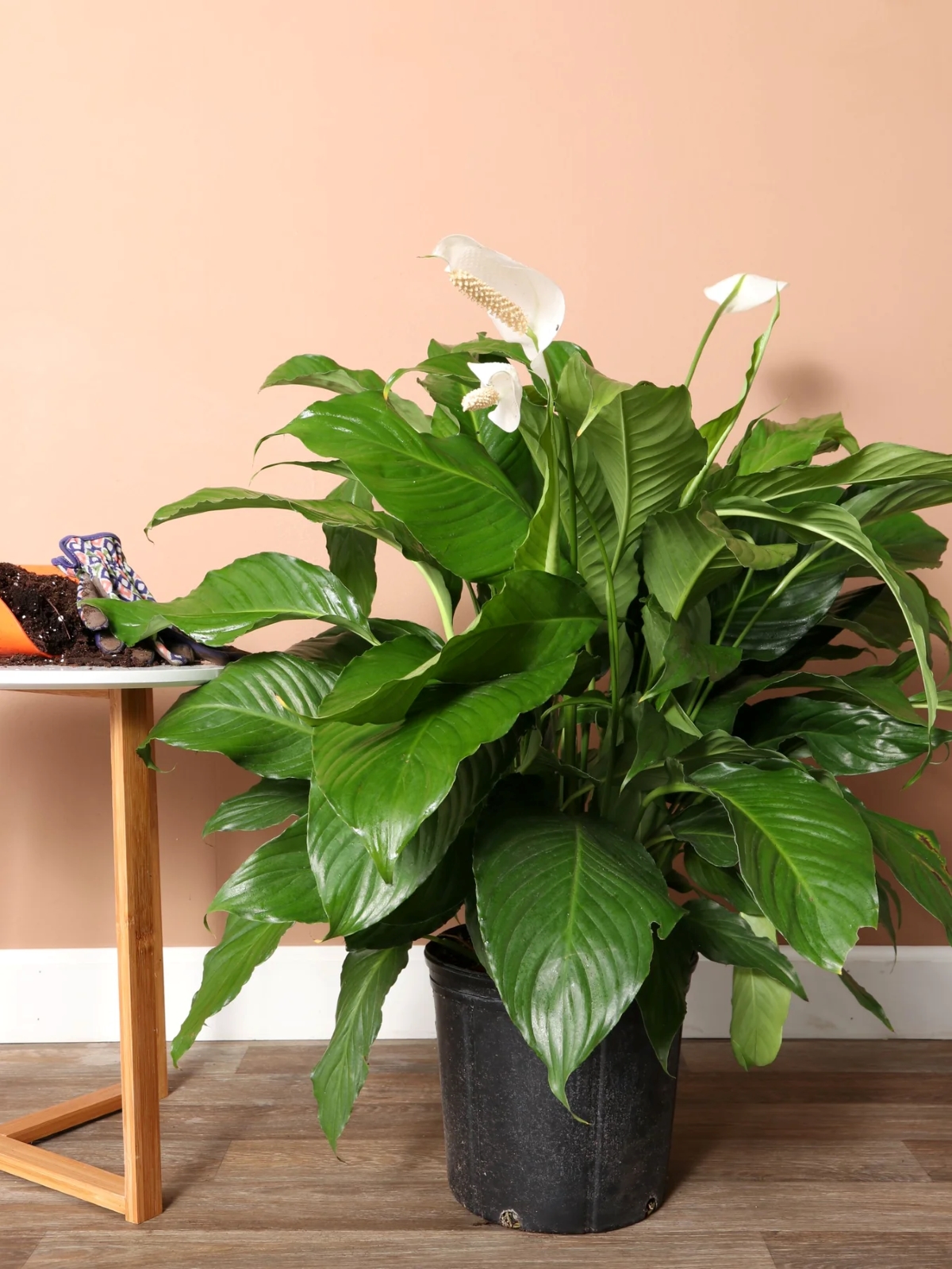
One of our favorite large leaf houseplants, peace lilies have dark green, glossy leaves and can grow up to 6 feet tall. Their pretty white blooms that will make appearances all year long. Peace lily prefers moist soil that’s allowed to dry between waterings, and it likes bright filtered light, but it can also do well in lower-light conditions. A big peace lily perk is that it’s one of the best houseplants for purifying indoor air.
12. Elephant Ear (Colocasia esculenta)
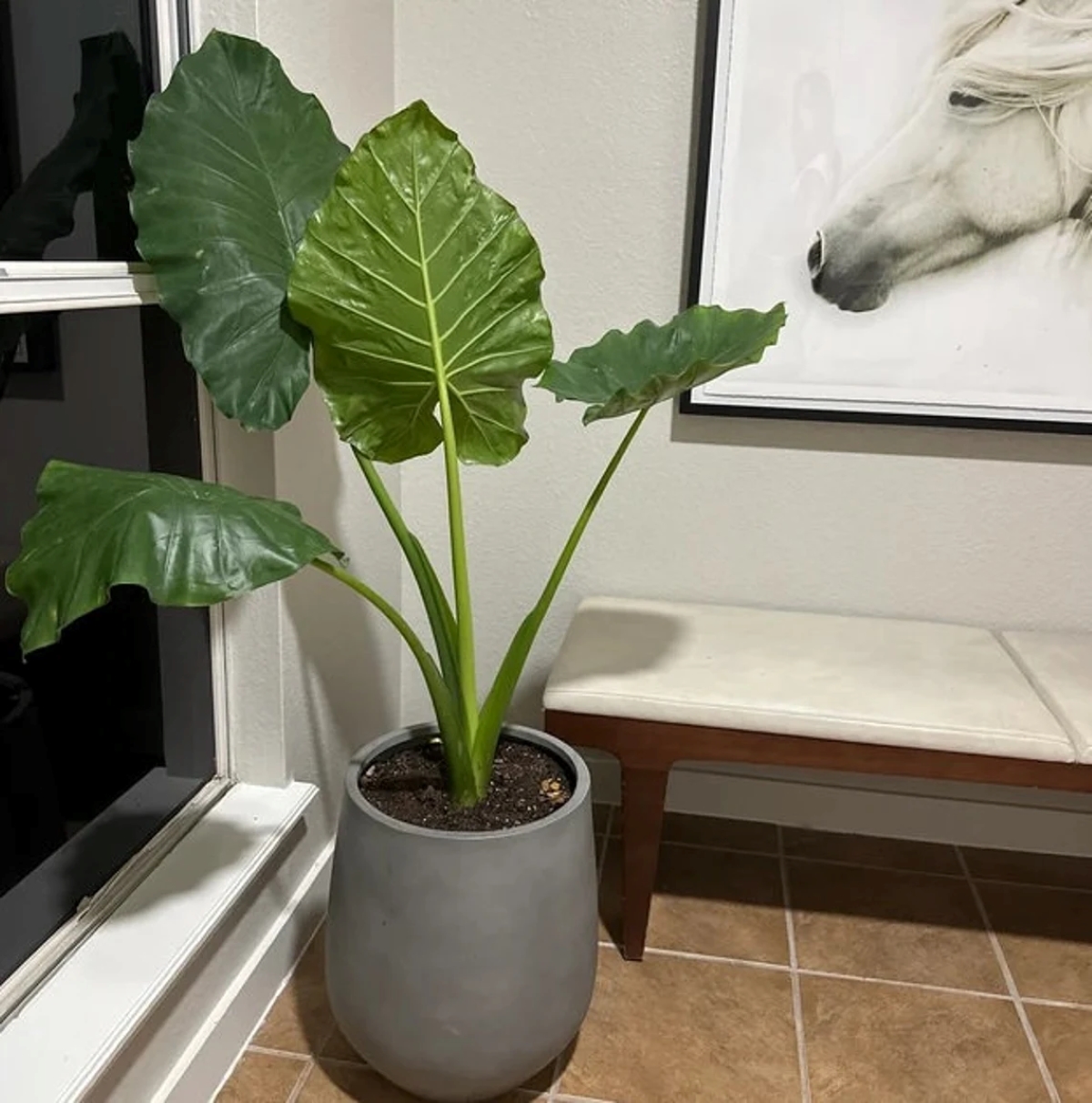
Elephant ears get their name from their very large leaves, which can grow up to 3 feet long, but the entire plant is usually 3 to 6 feet tall. These giant beauties prefer indirect light and moist soil. You should also take care not to let the soil dry out between waterings.
RELATED: This Guide to Alocasia Care Grows Stunning Elephant Ear Houseplants
13. Bird’s Nest Fern (Asplenium nidus)
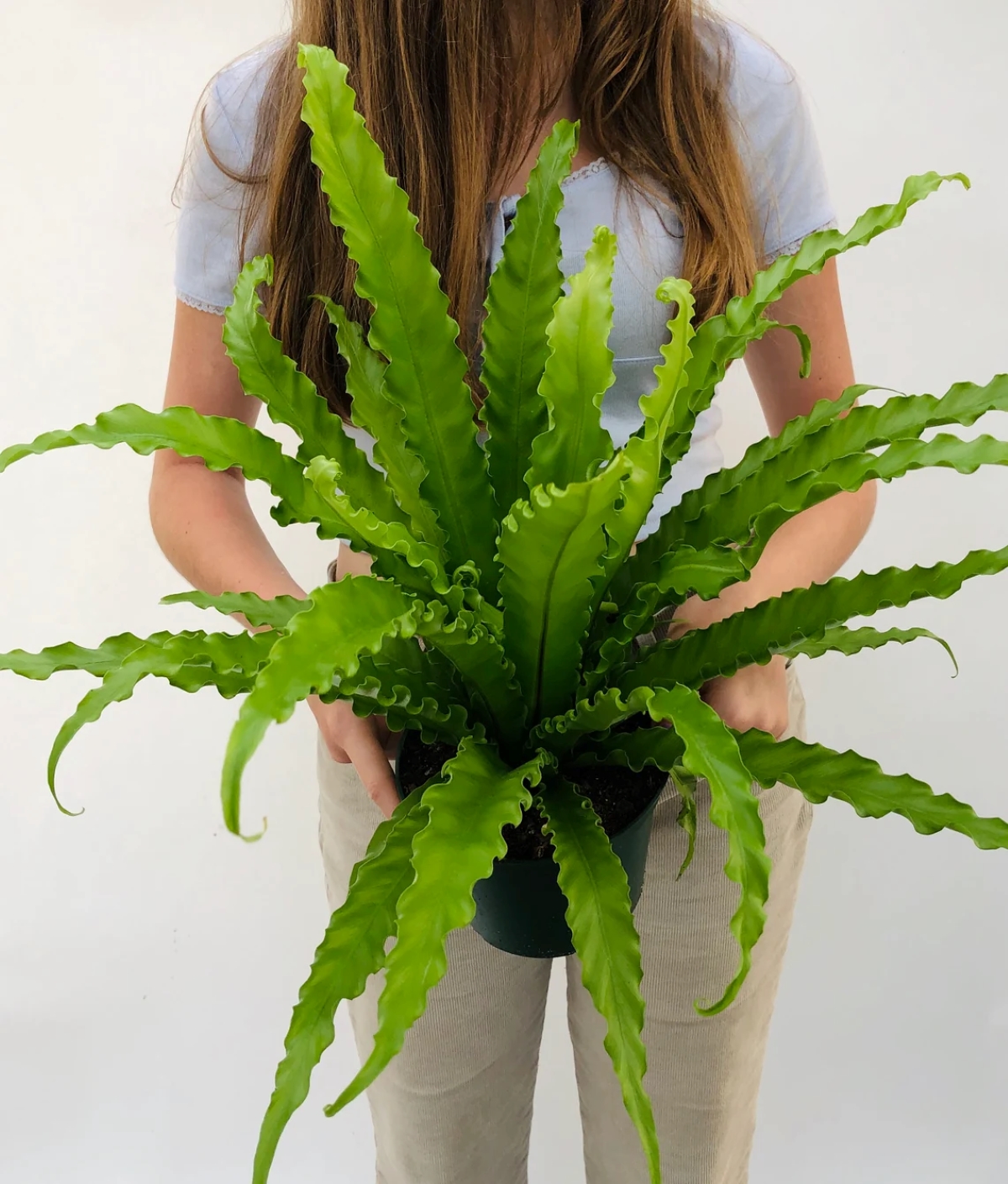
Bird’s nest ferns can grow up to 5 feet tall and 4 feet wide, so they’re a nice full addition to any houseplant collection. The slow-growing, tropical botanical boasts large bright green fronds that emerge from a nest-like center point, hence the name. Place it in a north-facing window with bright light or light shade to watch it thrive.
14. Majesty Palm (Ravenea rivularis)
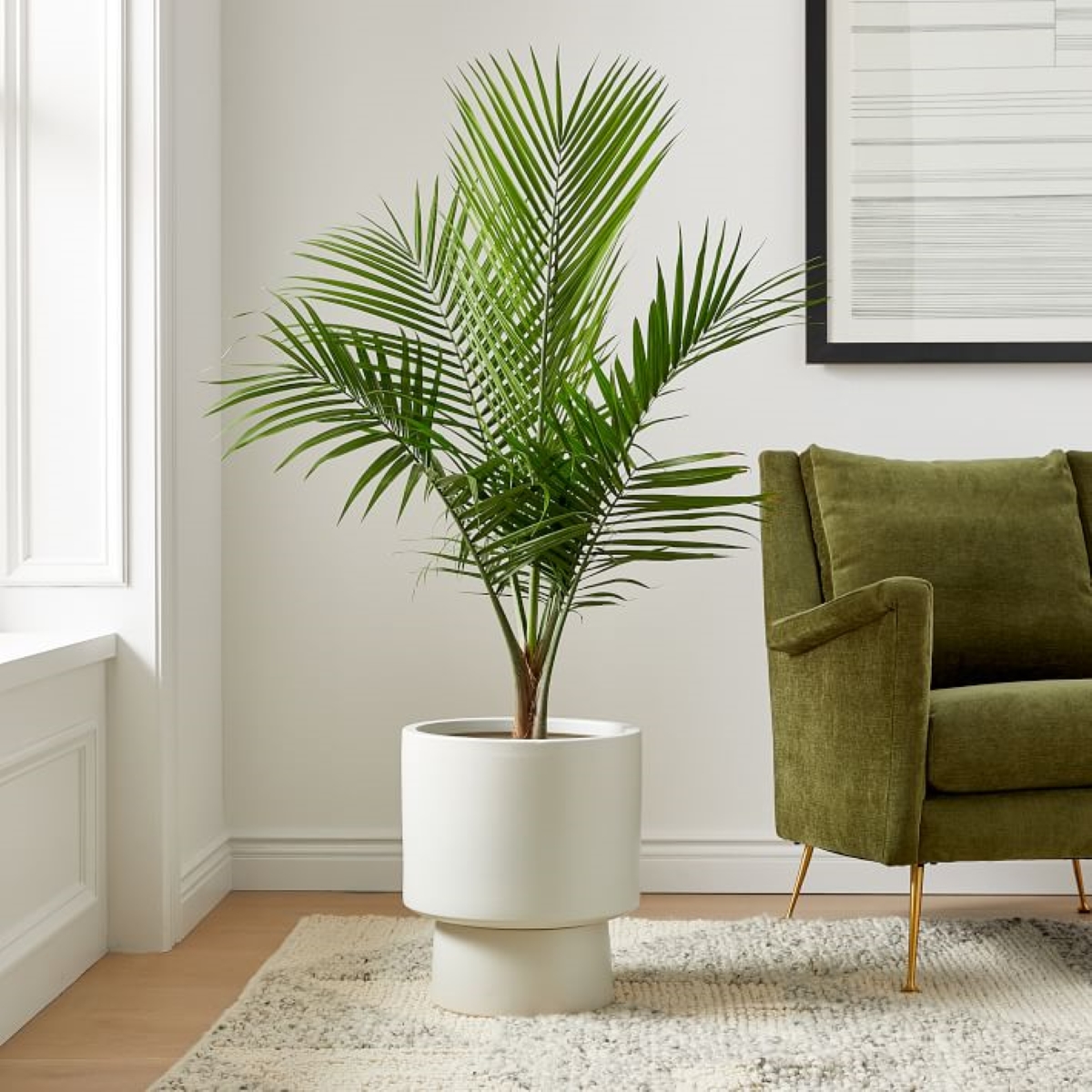
Majesty palms get their name from their great height, which can reach 100 feet when grown outdoors. But indoor plants can be kept at 10 feet or less. Multiple stems shoot up from the base, with deep green fronds that can reach 6 to 20 feet wide. These plants prefer high humidity and frequent waterings—you can periodically spray the fronds with water if your indoor humidity levels are low. They also prefer a mix of direct and indirect sunlight, so putting them in front of a curtained window is best.
RELATED: The 22 Best Trees to Grow Indoors
15. Dumb Cane (Dieffenbachia seguine)

Dumb cane can grow 3 to 10 feet tall and features pretty green leaves with streaks of cream, yellow, and white, so it tends to stand out among many other houseplants. However, it’s toxic, so it’s best left out of households with pets and small children who might eat the leaves. It prefers occasionally dry soil and full sun, but it can also do well in partial shade.
RELATED: Dumb Cane Care: Meet the Easy-Growing Houseplant with Full, Flattering Foliage
16. Banana Plant (Musa acuminata)
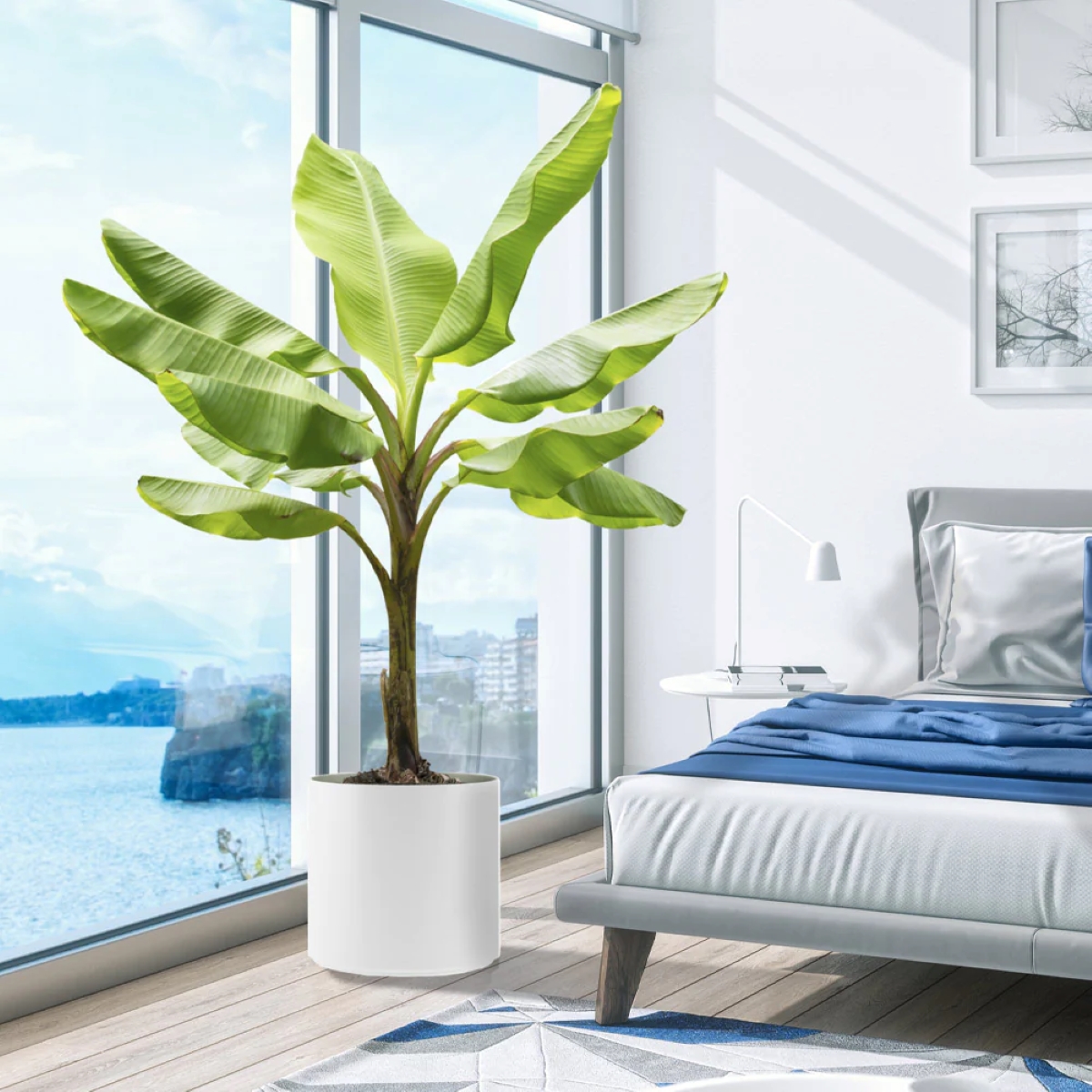
Also called Dwarf Cavendish, this species of banana plant can grow up to 20 feet tall outside, but when kept indoors, it grows well as an 8- to 10-foot decorative plant. However, banana plant is not likely to produce fruit when grown inside since it requires tropical conditions to do so. Still, it’s an eye-catching plant, fruit or not, and it’s relatively easy to care for: All you need to do is keep the soil moist and put it in front of a bright window to keep it happy.
17. Sweetheart Tree (Ficus triangularis)
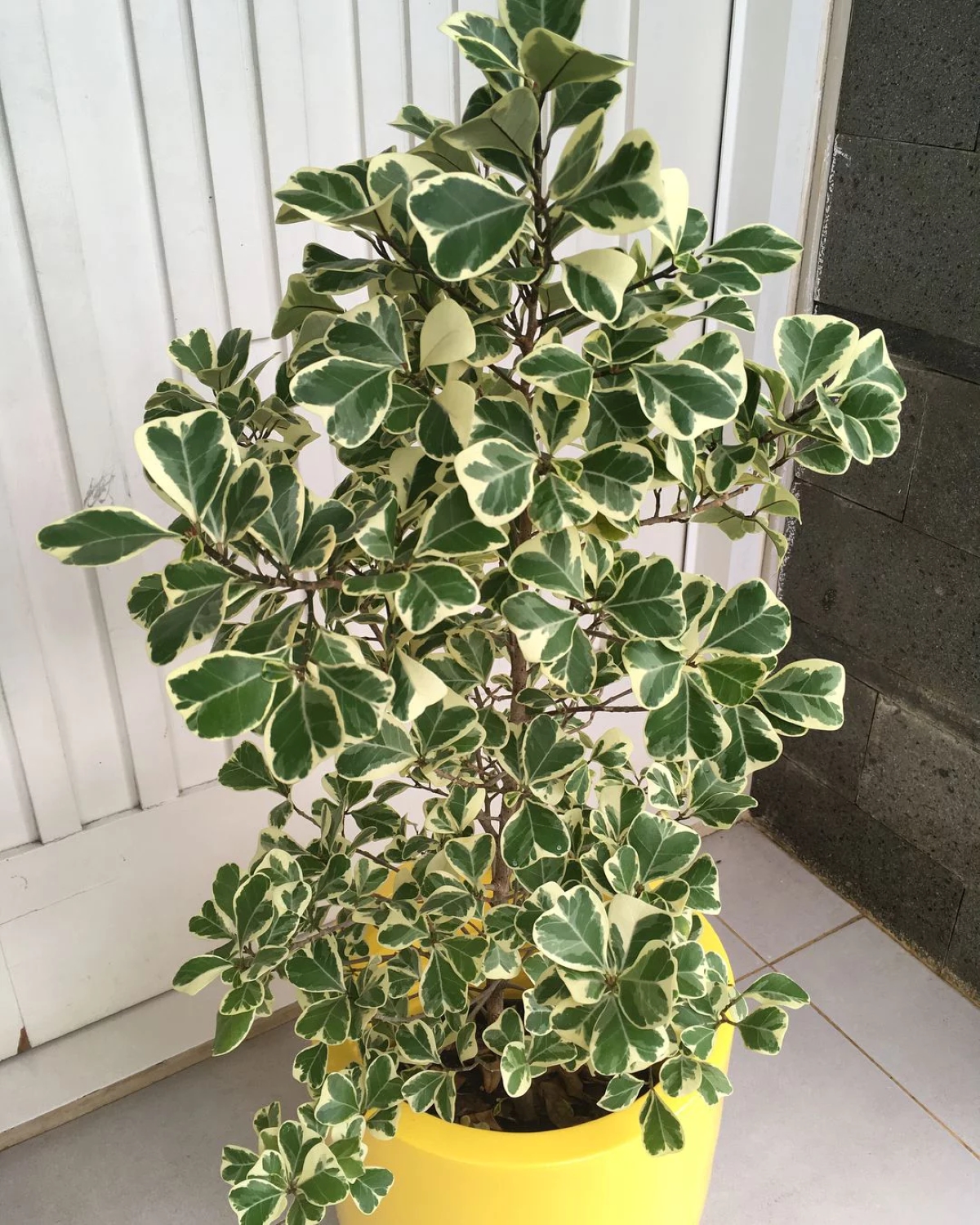
Sweetheart trees, also known as triangle figs, are quite easy to grow compared to many other ficus types. They’re also gorgeous, with heart-shaped variegated leaves that make for a stunning focal point. Growing up to 8 feet tall, this pretty plant does best in bright sunlight with moist soil that’s allowed to dry between waterings.
RELATED: 10 Trees That Tolerate Low Light Indoors
18. Norfolk Island Pine (Araucaria heterophylla)
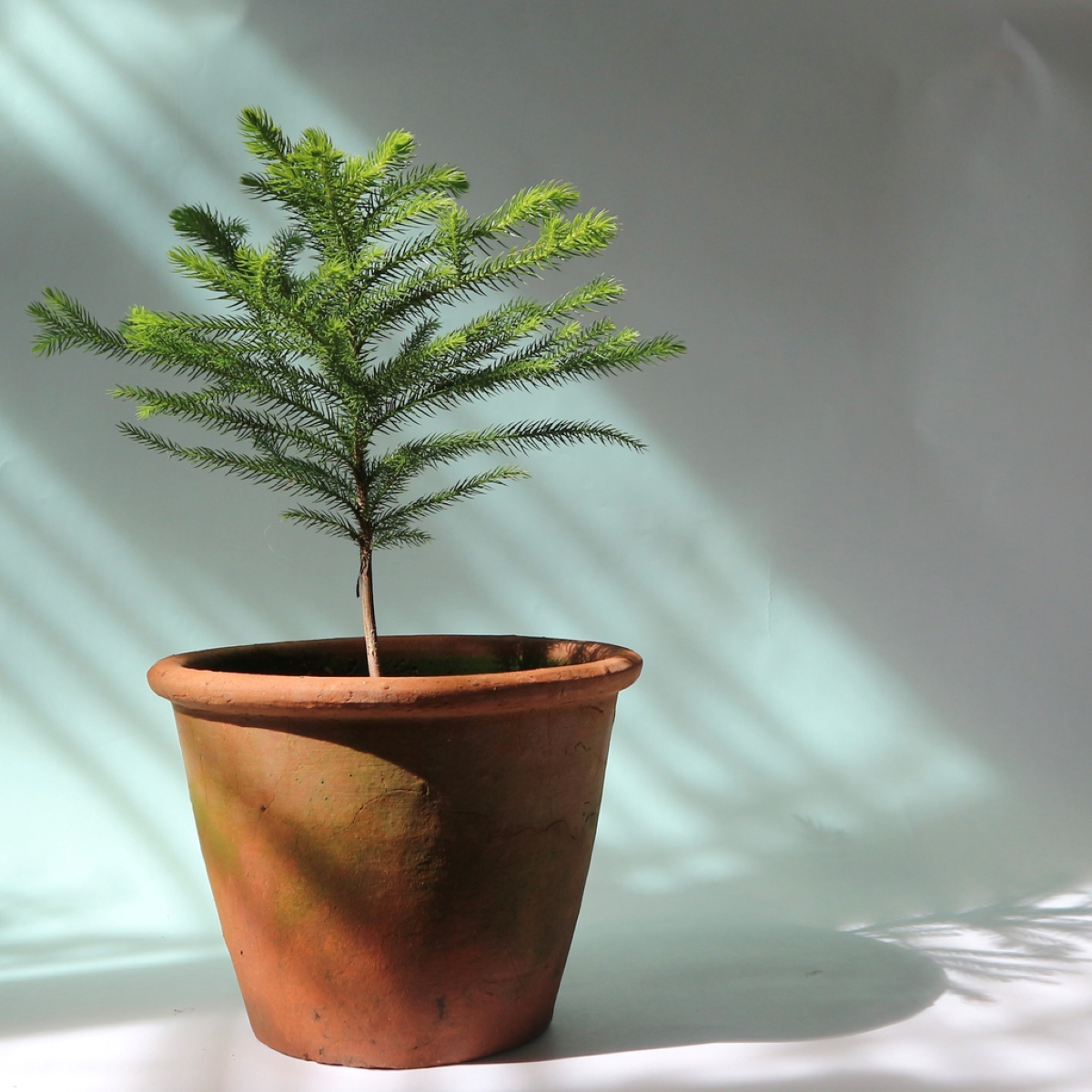
When grown inside, this evergreen plant can grow up to 9 feet tall. Norfolk Island pine looks somewhat like a pine tree with its long needle-like leaves, which is why it’s often given as a gift during the winter holidays, but it makes for a gorgeous indoor plant all year long. The fast-growing plant benefits from high humidity, so keep it away from air conditioning vents, and place it in front of a bright sunny window, keeping the soil moist.
19. Ming Aralia (Polyscias)
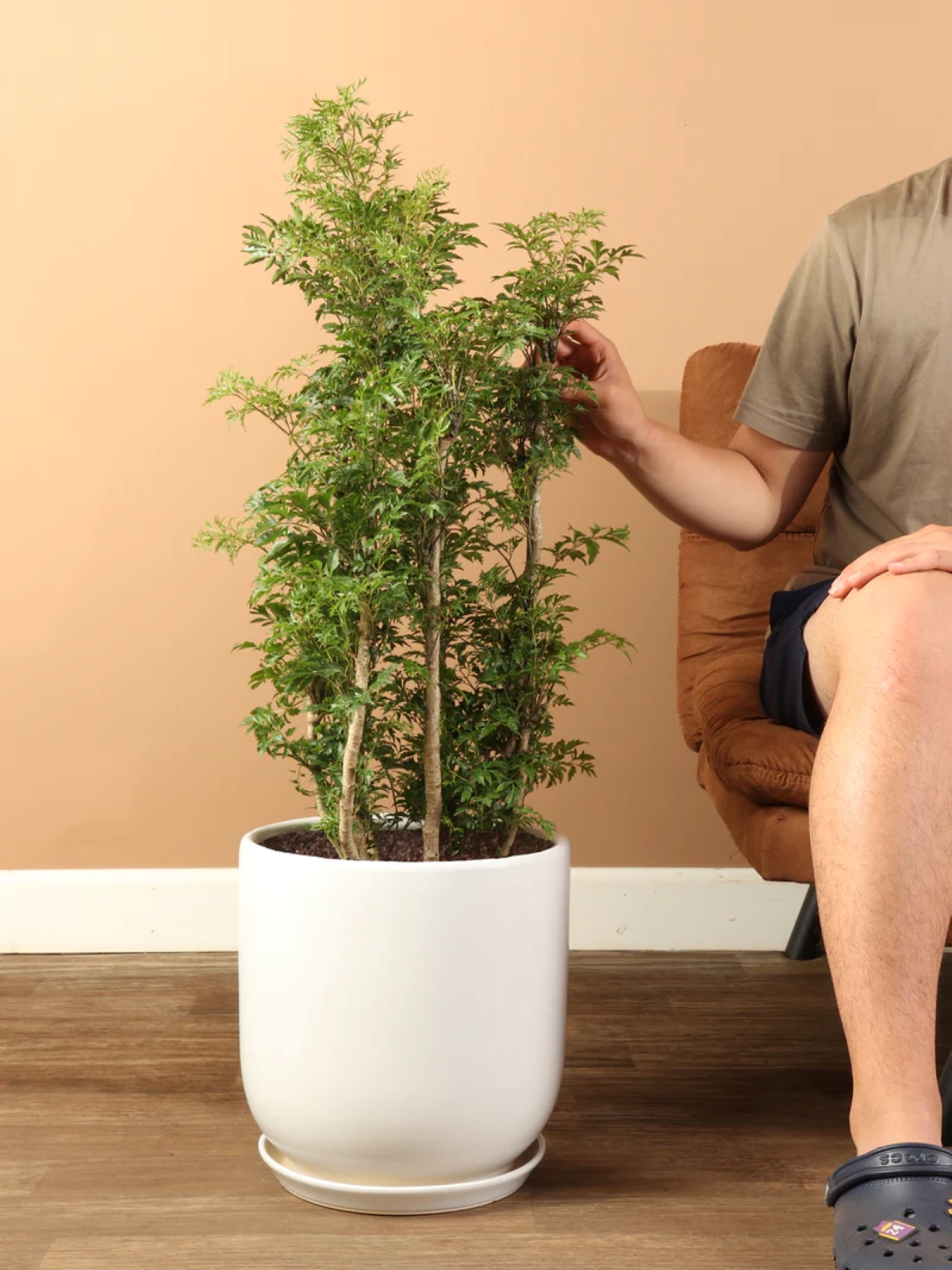
Ming aralia plants are 6 to 8 feet tall, with light feathery leaves on top of many narrow branches. It prefers rich, well-draining soil as the roots are susceptible to rot, and it does best in north-facing windows with filtered light. This plant likes warm temperatures, so make sure to keep it away from drafts or it’ll get fussy and start dropping leaves.
RELATED: 13 Plants You Can Winter Indoors
20. ZZ Plant (Zamioculcas zamiifolia)
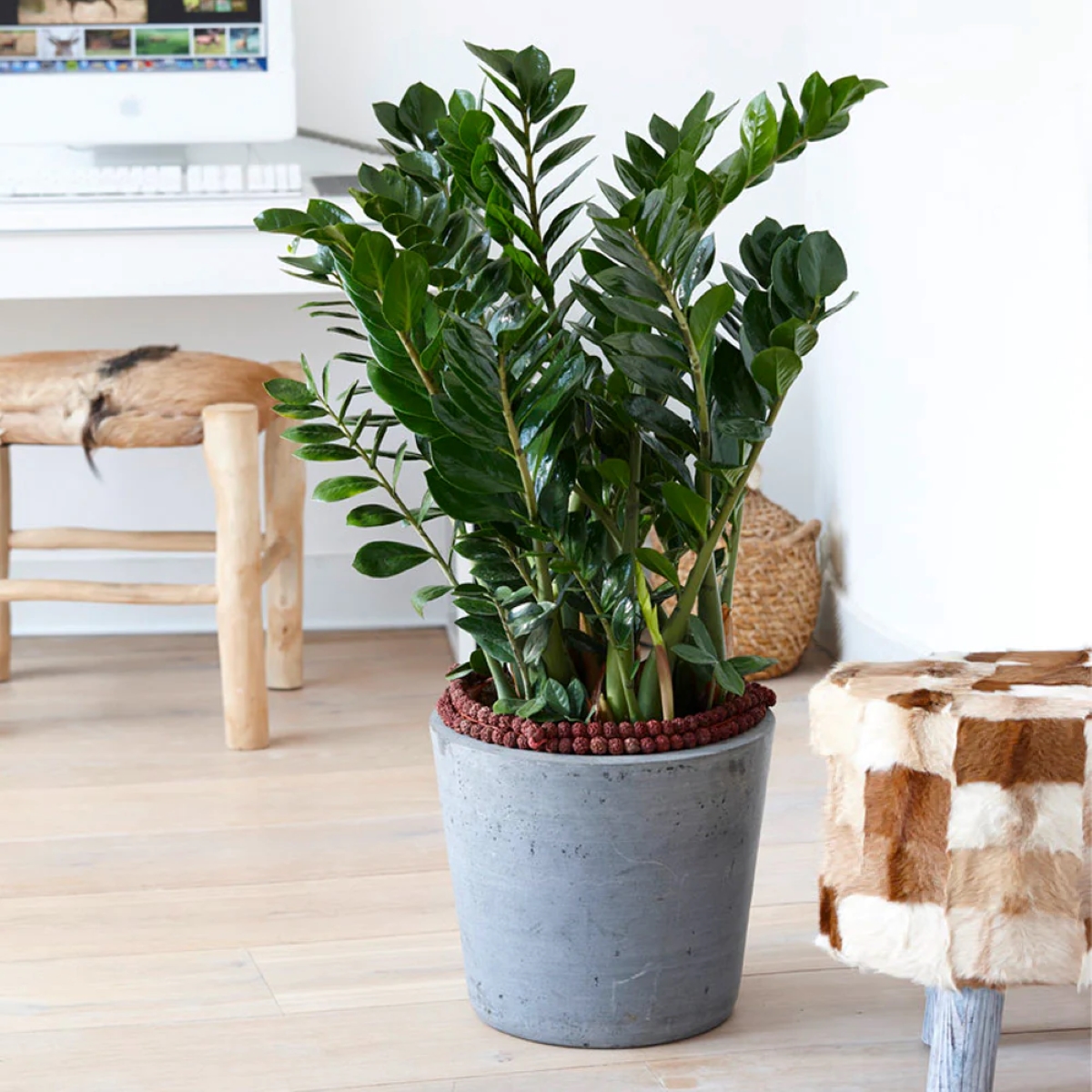
If you’re brand new to plant care, a ZZ plant is a great place to start because they’re among the most low-maintenance houseplants you can buy, but they look beautiful with their glossy green leaves. These 2- to 4-foot plants tend to prefer shade or partial shade, so you don’t need a bright window to make them happy. ZZ plants only need to be watered once or twice per month, twice in the warmer months and once in the cooler months.

